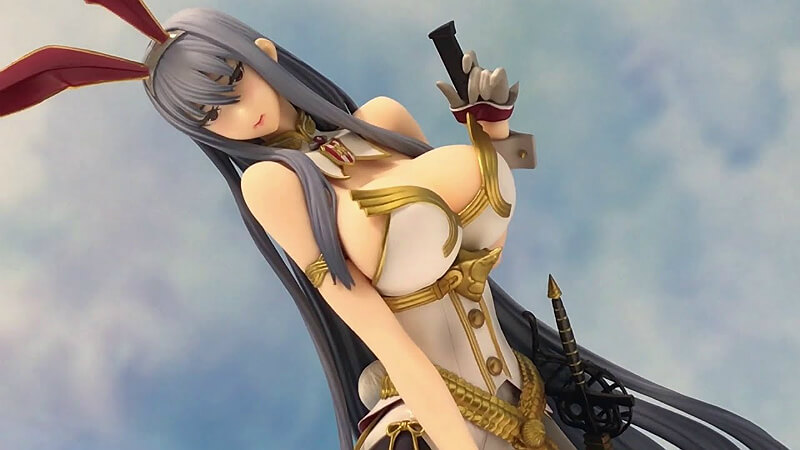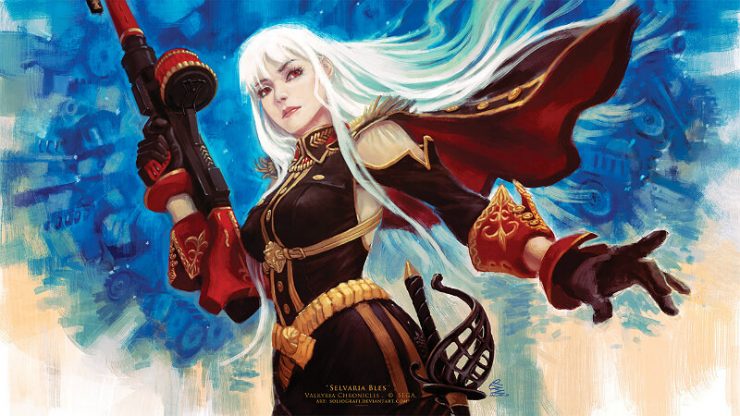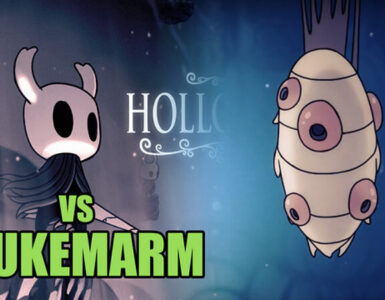Warning, the following post contains spoilers regarding the plots and endings of Valkyria Chronicles 1, Valkyria Chronicles 3, and Behind Her Blue Flame.
So after replaying the first Valkyria Chronicles on Steam and finishing the translated version of Valkyria Chronicles 3, I came to a few conclusions regarding the character of Selvaria Bles.
Let’s start with her first appearance in the series, the main story campaign of Valkyria Chronicles. After a second replay, I realized that she’s actually an incredibly flat character, which isn’t all that egregious considering none of the villains really got enough screentime or development to be well rounded characters in the first place. Another uncomfortable truth about her character in VC1 is that she’s pretty much stone cold evil, no different than Maximilian. Her entire characterization orbits around Maximillian and she embodies all of the same traits, ruthlessness, disdain for failures, and arrogance towards Gallia. And while many fans remember her death as being the tragic culmination of someone who has lost the will to live, she actually never portrays this sentiment in game.
Anyone who’s played the game or has seen the anime knows that Maximillian treated her like an expendable pawn and twisted her emotions to serve his goals. Maximillian never once showed respect for her feelings, and I’ve seen some articles attempting to spin Selvaria’s arc as a tragic story of unrequited love. Which is nonsense considering that Maximillian was only ever consumed with a desire for power, Selvaria was just a means to an end. Without taking these interpretations into effect, Selvaria never once during the game realizes this and even after he degrades her and commands her to commit suicide, her dialogue and combat barks still praise Maximillian to the heavens and she never wavers from this blind devotion. Her one defining moment of weakness after her “beloved” tells her that she’s worthless to him alive, seems to hint at a potential character arc where she begins to realize her error in trusting her prince and supposed savior. Selvaria appears genuinely heartbroken in this scene.
However, her appearances beyond this scene seem to ignore this. There are differing interpretations on whether her final stand was a genuine attempt to fight as a human and not be defined by her Valkyrian power, or a wounded gazelle gambit intended to lure Gallia into a trap and fulfill Maximilian’s final orders. As stated earlier, Selvaria is downright evil in the original game, yelling at her troops for failing her (twice), showing arrogance towards Alicia even moments before her death, so it’s not hard to interpret that she was 100% complicit in Maximilian’s orders to use the final flame.

Ultimately her death in the first game comes off as emotional manipulation of the audience. While yes, her death was played off as tragic, it’s all because we’re meant to hate Maximillian. Her death is very poorly handled within the greater context of the story because it has no effect on the endgame. Selvaria is never granted a character arc because we’re supposed to hate the villain even more before the final confrontation. And she’s just fucking downright evil. One sympathetic moment does not redeem a character.
Now even after saying all of that. I have a different argument to make now with the DLC in mind. The prologue DLC Behind Her Blue Flame portrays Selvaria in a different light, almost to the extent of contradicting her entire character. The Selvaria Bles we see in the DLC is sympathetic, nurturing, and fearless, but also vulnerable and self-doubting. In the main story campaign, Selvaria has no characterization outside of her one-sided relationship to Maximillian, and embodying the same cold-blooded villainy he does. But here, she’s allowed to be her own person and this new personality seems to be the one that everyone remembers about her from the first game. Behind Her Blue Flame also introduces Johann Eisen, a cowardly and unsure engineer who is tasked with serving Selvaria and tending to her battlefield needs.
Now I bring up Johann because his introduction does several things that help us understand her new personality. Johann is essentially an extension of Selvaria, and makes the same mistake that gets her killed in the main story. Johann becomes entirely devoted to Selvaria, wanting to be by her side until the very end after falling in love with her, as she becomes his new purpose in life. This perfectly mirrors how Selvaria was manipulated into serving Maximillian. Selvaria and Johann’s relationship develops significantly over the course of the DLC, and it’s a healthy, believable, potential romance between the two.
The main story campaign would have us believe that Selvaria is this ever stoic villainess whose sole fixation and emotional crutch in life is Maximillian. Combined with her new personality, Selvaria opens up to Johann after just their first mission together, and they both build character off one another. This culminates in a candlelight dinner between the two, cooked by Selvaria herself, who we find out has a secret passion for cooking. (This ending is contingent on an A rank in the DLC).
Now the contradictory aspect of Selvaria’s characterization from the DLC is that she expresses a solemn acceptance of her nature as a Valkyria. After seizing the citadel, Johann and Selvaria discuss their reasons for fighting. Interestingly, she doesn’t bring up Maximilian or her devotion to him. Instead of talking about how Maximilian saved her and gave her a new purpose, she expresses sorrow that her purpose in life is defined by the fact that she is a Valkyria. Even though Johann derives his reason for fighting from Selvaria, she should in theory express the same sentiment about Maximilian since he saved her and gave her a new purpose in life.

Except she doesn’t. Selvaria in the DLC contradicts her previous characterization from the story campaign because her emotions are no longer bound to Maximilian. Even beyond that “New Selvaria”, is portrayed as a mother to her men. “Old Selvaria” berates her troops as cowards and incompetents. Behind Her Blue Flame strips away the poorly written and villainous aspects of Selvaria while also unbounding her from the one-sided relationship that previously defined her character. But this also creates new problems.
The end result of Behind Her Blue Flame was that her character was changed into someone who is the exact opposite of who she was in the main story, and it even introduced a more sympathetic and likeable love interest. As much as I like the new version of Selvaria, it’s slightly baffling that she was turned into a likeable character only after the writers had already killed her off. With Selvaria’s old, Stockholm syndrome induced characterization in the main campaign, her death is more or less believable (if at least just poorly handled).
But now, with Selvaria’s new personality and the addition of Johann, she became a likeable anti-villain instead of a straight “generic evil” villain, gaining the admiration of fans and more than one plea to bring her back. We know from Oswald the Iron’s appearances in Valkyria Chronicles 1 and 3, that he survived the war all the way up to the battle of Ghirlandio. And considering how close the two had become by the end of the DLC, it’s very conceivable that Johann would have stopped at nothing to save Selvaria from suicide. I’m probably not the only person who would support this kind of retcon since Selvaria’s entire personality had been changed.
Selvaria has minimal screentime in Valkyria Chronicles 3, mostly appearing alongside Maximilian, or on her own in order to build up her conflict with Imca. There are a few aspects of this game I had to dredge up from the official design archives to complete this analysis. What we do know verbatim from the game is that Selvaria destroyed Imca’s village and Imca was the only survivor. While Imca was eventually defeated by Selvaria, she does not finish her off. Rather, Selvaria hands Imca off to Kurt and asks him to help her find a new purpose in life. While Selvaria rarely shows her emotions in the third title, she displays subtle differences from her depictions in the first Valkyria Chronicles. She is shown on her own investigating the ruins of Imca’s village as an adult, reminiscing about the tragedy, and also routinely steps out of line during Maximilian’s meetings.

In fact, Maximilian shuts her down a lot as she tries to voice her own opinion over the Yggdists and Calamity Raven. Regardless of this fact, her character still feels contradictory towards the final act. As Selvaria and Imca face off, she tells Imca that she has sworn not to use her Valkyria powers, preferring to make her final stand at Ghirlandaio as a human in order to prove her worth. This detail confirms that Selvaria was in fact trying to avert carrying out Maximilian’s final orders, continuing the trend of trying to break away from her characterization in the base campaign for VC1. This is further reinforced by the idea that Selvaria spared Imca and wanted her to find her own destiny free of vengeance. Despite this, Selvaria uses her Valkyria powers in order to knock Imca out, saying that she “cannot fail her lord”.
This implies that Selvaria herself planned to try and defend Ghirlandaio, but was prepared to sacrifice her own life in the final flame in the event she lost the battle. But that’s where I pose the question, if she was determined enough to win the final battle and prove herself on her own, was she really committed to dying for Maximilian in the event she lost? If Selvaria had enough willpower to disobey Maximilian by sparing Imca and trying to fight the best she could, why would she give up at the end and fulfill his final orders? Once again, her actions contradict themselves.
Now the design archives add a little more nuance to why she felt remorse over Imca. It’s never stated in game, but in the design archive book, Selvaria is stated to have lost control of her powers as a child, accidentally destroying Tiluca village. This adds additional context as to why she tried to give Imca a new chance at life. But once again, if Selvaria was committed to atoning for her actions towards Imca, why didn’t she try to find her own path rather than submit to suicide?
With all three of these examples out of the way, I’m going to make my final conclusion of Selvaria’s characterization throughout the series. This will delve into some of the meta aspects of the narrative.

Behind Her Blue Flame is the “most accurate” depiction of Selvaria when describing her character…
I say that because both Valkyria Chronicles 1 and 3 are narrated by persons who were not actually present during the game’s battles. Neither Irene Ellet nor Ramsay Crowe knew Selvaria personally, and thusly, her personality is completely limited to Ellet’s melodrama and Crowe’s secondhand accounts from the Nameless. Even if Alicia and Imca, Selvaria’s two main rivals in the series, both provided accounts of Selvaria as a person, Johann is the only reliable narrator we can refer to for who Selvaria actually was. Johann knew Selvaria personally and was her emotional confidant as far as we know from the DLC.
So in this instance, I’m going to err with Johann’s accounts of the Gallian War. While yes, he was in love with her, he is also the only narrator to actually have insightful personal accounts as to who she was and what her true nature was when not on the battlefield.
A final thing I noticed about the DLC, and her portrayal in the series in general… Is that she never once smiles during her appearances in the main games or in the anime. In Behind Her Blue Flame, she seems to genuinely enjoy Johann’s company, and it’s during the DLC that we actually see a rather depressing and tragic character smiling for once in the series.
The reason I write this analysis is because over time I noticed these inconsistencies in her character writing and attempted to string together common threads based on the games she appears in, and how she is written in each depiction. I originally despises her character in VC1, and only grew to like her after playing the DLC. Even then, it’s difficult to excuse how SEGA keeps tampering with her character over and over again without settling on a definitive “portrayal” or keeping a consistent tone with why they bother to stuff her into every game.
Dear SEGA, Either bring her back and stick with the version of Selvaria people actually like (Behind her Blue Flame). Or just let her stay dead and stop fucking with her character writing, it’s a dead horse at this point.
With all of that wrapped up. I hope you all take something from this. And please, contribute anything you can think of to this post if you notice something I missed.
Oh, and fuck Maximillian.
“I fear there is no home but the battlefield for a Valkyria.”
Selvaria Bles
Original Link – Continuation of discussion






Add comment